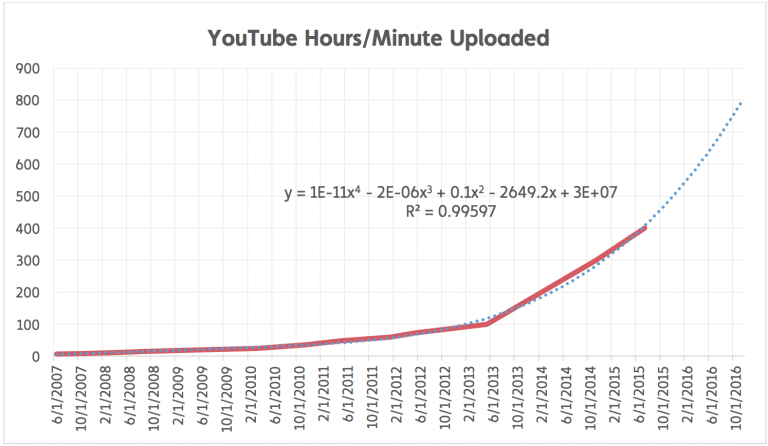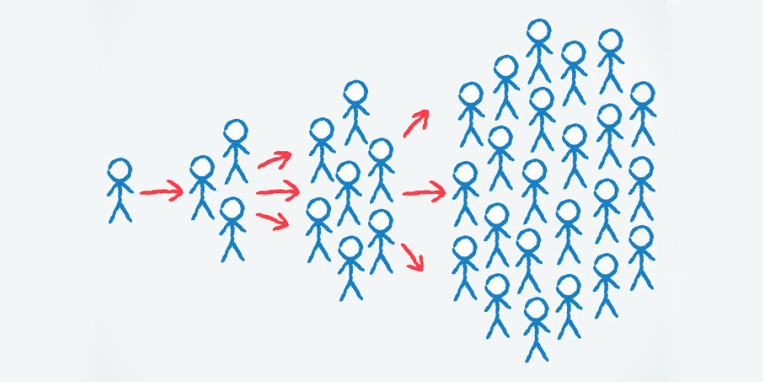Social media is continuing to blur the already indistinguishable line of acceptable body image previously tarnished by conventional media.
Aptly captured in an early scene in Fight Club, Tyler Durden (Brad Pitt) remarks the following to Edward Norton once they enter a bus and notice an advertisement displaying a male underwear model:
Is that what a real man is supposed to look like?
We’re beginning to enter a state of hyperconnectivity, with the images, actions and thoughts of those around us oft appearing in the public realm for all to see. As social media continues to intertwine itself deeply into our personal fabric, we must stop and think of the impact it has on our lives and the way we view ourselves.
What is Social Media?
Put briefly, it’s the ability to create, share and exchange information with our fellow human beings. This information, known also as online content, typically exists on social media platforms that facilitate this communication.
Friendships? Facebook.
Breaking News? Twitter.
Video? YouTube.
Pictures? Instagram.
Q&A? Quora.
In most cases, we’re able to see what our friends (or “connections”) choose to endorse which plays a part in the content we choose to view. If a post has higher user engagement, Psychology will tell us that it must be superior to a post with less widespread recognition. What happens next is that you yield to your curiosity and see what the fuss is about.
Popular content can spread like wildfire, taking it from a handful of modest feedback to a platform-consuming viral juggernaut.
Remember the rapid social divide caused by the color discussions of this dress? (It’s gold and blue)
So, how does this affect us?
The Changing Perception of Body Image
Among the 1.04 billion daily active users on Facebook lie many that showcase themselves looking at their best. Photos at the beach, gym or out on the town during a weekend; we’ve seen them all. Dating apps such as Tinder reinforce this notion more stringently, limiting its users to only a few photos per profile. Poor self-representation here could mean the difference between a fun night out or being perpetually “left swiped” into sexual oblivion.
Two decades ago, reaching popularity or a wide audience was more formulaic. If you wanted to become a recognized model you would go through an agency or hope that a popular magazine thinks you’re attractive enough to grace their pages. Achieving a level of fame as a musician would involve creating tapes that you hoped a local radio show liked enough to give it playtime over the airwaves. In other words, there was a well-defined funnel you had to pass through to reach this fame.
What we’re dealing with now is slightly different; interactive media is a whole different ball game.
In fact, you’re only seconds away from receiving immediate feedback from others, whether it’s positive or negative. A discernible roadblock no longer exists. The heavily reduced feedback cycle, as positive as it is in an occupational sense (writing, software development, etc), can be psychologically harmful; especially when users tie up so much of their self-worth in the feedback they receive on their photos and videos.
Yeah… but social media isn’t actually as bad as what we see in the media, is it?
In July 2015, a study submitted to the Journal of Eating Disorders by Cohen and Blaszczynski was conducted using 193 female psychology undergraduate students.
The goal of this study was to compare body image dissatisfaction between Facebook users and conventional media consumers to decide if there was a noticeable difference between the two.
The participants were split up into one of two groups; one involving viewing “thin-ideal” profile pictures on Facebook and the other looking at similar images in conventional media such as magazine covers and advertisements.
Participants completed questionnaires before and after the image viewing, answering questions related to self-esteem, appearance comparison and eating disorder risk. The researchers concluded that body image dissatisfaction was comparable between Facebook and conventional media.
A conclusion like this makes you sit up and take notice. Being potentially exposed to the same psychological effects when using our favorite social media service as traditional media makes you begin to question what’s actually causing it.
How is it Being Discussed?
Early last week, the popular Australian program Hack hosted a discussion on live television about body image and at times questioned the role that social media plays. From watching this hour-long broadcast, it occurred to me that we’re obsessed with extremes in the body image space, particularly in Australian media.
You’re either too skinny or overweight.
You either go all in and become obsessed or simply do nothing and criticize.
When did the concept of moderation become such an alien notion to the millions of people running the all or nothing fitness hamster wheel? I must have missed the memo.
I acknowledge that dealing with extremes makes for an intriguingly fiery debate between those of varying opinions, thus boosting ratings and drawing more attention to the program in question.
However, more exposure to this issue (in any form) is a positive, making it a win-win for everybody.
A 24-year-old bodybuilder named Bryce Whatley featured heavily on the program, expressing a desire to begin steroid usage. He spoke of social media being an asset in developing a following, particularly in the health and fitness realm and how amassing a larger audience will enable him to educate the younger generation of gym-goers.
I’ve struggled long enough with body image that now it’s like maybe it’s going to be worth it if I have the physical results I think I deserve.
The usage of steroids as a potential elixir to body image issues demonstrates a flawed state of mind, particularly with this person.
Perhaps it can be considered a short-term physical solution, but at what mental cost? More followers and likes will also fail to remedy his situation because bodybuilders and “fitspiration” preachers are now a dime a dozen. To be noticed in this space, you must bring something new or different to the table, something of value which requires substantial work.
Renowned airhead Ashy Bines also featured, admitting to altering her Instagram photos in the past to bolster her social media following. With over 660k Instagram followers, this woman is seen as a health and fitness motivator to many young women wanting to improve their physique and lifestyle.
In 2014, Ashy received the distinguished honor of having her “Clean Eating Diet Plan” voted as one of the three worst diet plans available in Australia. With over 200 accredited practising dietitians casting their vote, her product was shamed along the “Lemon Detox Diet” and “SkinnyMe Tea”. For my thoughts on these “skinny tea” products, read The Dream Body is a Marketing Myth.
Lacking any kind of formal education on the human body and dieting protocols, this woman represents everything that is wrong with the fitness industry and her consistent misinformation should be universally ignored.
On the other end of the physical spectrum, plus size models have also taken to social media and are actively expressing themselves online. One such example is size 22 model Tess Holliday, recently voted as Time Magazine’s 27th most influential person on the internet. With over 1.1m followers on Instagram, her aim is to disregard societal body image norms and for everyone to embrace themselves for who they are. In a world previously awash with rail-thin models, Tess’ online presence on social media is a breath of fresh air for those who may have lacked a plus size role model to look up to.
Being comfortable in your own skin regardless of body weight will substantially increase your quality of life. However, the risks of a larger waist size such as high blood pressure, heart disease and osteoarthritis remain present no matter how comfortable one is at their weight and how positive the message being conveyed.
This is reality.
It is noted that any discussion of plus sized models is fraught with strong views on both sides and spells trouble for those willing to openly express an opinion. Reiterating my earlier point of extremes, care needs to be taken when involved in a discussion about body image unless you’re ready to be publicly accused of “fat” or “skinny shaming” which has become prevalent. We can thank Nicole Arbour’s controversial Dear Fat People video in September last year for raising the general online hostility towards body image to a near-riotous level.
The Future
It’s inevitable that we’ll become even more comfortable expressing ourselves online and thus continuing to produce more content. If we look back 5 years ago to January 2011, there was an estimated 48 hrs of YouTube video being produced every minute. Fast forward to November 2015 and this number has increased exponentially to 500 hrs.
This is more than a 10x increase in under 5 years.

Source: http://www.reelseo.com/hours-minute-uploaded-youtube/
I predict our social media profiles will become seamlessly integrated with our own image. How to use Big Data is a hot topic now in the technology sector and large companies will continue to fine tune advertising based on the sheer quantity of information everyone is sharing about themselves.
Access to this data may even be used as an extra variable (for example) to filter candidates from job interview processes, if it hasn’t already been adopted at this point in time.
The ideal scenario, I believe, involves continuing to discuss body image in the public space. This way, we can observe both sides of the same coin to make sure we’re able to filter out the noise and make up our own minds. That is, if we wish to become the healthiest versions of ourselves both on and offline.
Thanks for reading my three part BIGorexia series! If you liked this article, be sure to check out the first two parts:
Part 1: BIGorexia – Is Bigger Actually Better?
Part 2: BIGorexia – Physical Change Over Time
Did you enjoy this post? Receive one weekly update containing knowledge, tips and actionable content delivered straight to you. Strictly no spam.


